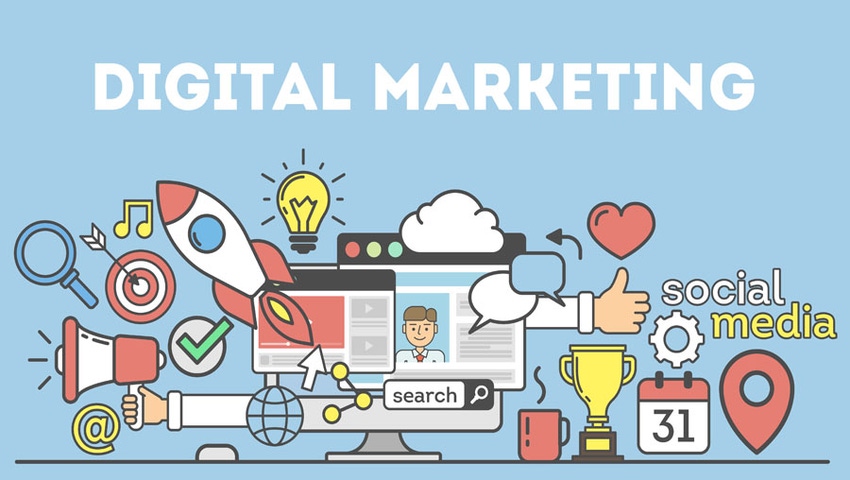Digital Marketing That Targets Different Demographics
Natural product brands can create inexpensive, effective digital marketing campaigns if the brand can familiarize itself to the available digital platforms and free resources offered by the different platforms.
January 8, 2018

Amazon has a U.S. market share of 5 percent of total retail sales, excluding revenue from food. This is as per U.S. Census Bureau data quoted by MKM Partners analyst Rob Sanderson and reported on cnbc.com. It is the largest online retailer in the country.
Despite the relatively small market share, Americans feel ubiquitous presence of this online retailer. This has to do more with the nature of technology that brings the market to the individual. Clearly, traditional retail is still not dead.
The pressure of the digital mode of selling has become so great that traditional retailers, such as Walmart, Costco, Home Depot, etc., with valuable pieces of real estate property, are investing heavily into digital retail. They don’t want to be left behind.
This, though, is not a one-way street. Online retailers, like Amazon, have also started experimenting with physical retail stores, too.
A feature of digital retail is its high rate of growth. According to Market Watch, Amazon has shown consistent and rapid growth over the years.

The figures on Alibaba, another high-profile online retailer, is equally impressive. According to chinainternetwatch.com, Alibaba's China retail marketplaces reached 488 million by June 30, 2017. These are mind-boggling figures, indeed. Clearly, no industry, including the natural products industry, can afford to ignore the digital mode of selling.
Businessinsider.com, in quoting the ecommerce demographic report for 2013, stated men and women in the United States are driving online spend. Men are more likely to make purchases online using mobile devices. Men want to shift purchasing to fully online. Teenage males were found to be keener on making online purchases than women. Men prefer general ecommerce sites, like Amazon and eBay. Women prefer specialized and fashion-conscious sites.
Digital marketers can use demographic information like this, along with digital designers, advertisers and domain specialists, to customize products and design marketing campaigns. These campaigns are then targeted to a specific demographic and geographic segment. For instance, natural product companies focusing on cosmetic products will package and design campaigns that are appropriate to specialized fashion sites. A product and campaign targeted at men and teen males is re-designed to address preferences of this gender.
Augmented reality and virtual reality tools come in handy in product and product display design. Machine learning algorithms add to the effectiveness of a targeted campaign. While algorithms specific to a natural product industry segment can be built from scratch, customized tools require an extensive gestation period before they become effective.
Off the shelf, integrated applications like those created by Google, Amazon and others can be deployed. However, choice of a tool is dependent on the marketing objective. Certain tools are more effective in increasing brand visibility and less in helping clock higher sales, and vice versa.
The most common and popular marketing campaign tools outside of China come from the Google and Amazon stables. Google AdWords campaigns can be targeted to a region, market segment, gender and geography. The application algorithm throws up a range of key word choices from that one can select and use to use to run a campaign.
YouTube short videos are especially useful in raising brand awareness through targeted ad campaigns. A bit of innovation and use of available digital tools can give a boost to a marketing campaign. Both Google and Amazon have fielded technical teams that a natural product company marketer can consult to design and launch a targeted campaign. This support is available at no cost.
Before launching a campaign, a natural product marketer should invest resources to analyze the target market. Google Trends, Google Alerts and social media listening applications, like Hootsuite, Adobe Social, Trendwatching.com and producthunt.com, are some tools that can be deployed to undertake such an analysis.
While Google Trends and Alerts give broad company and market trends, the social media listening tools help capture customer conversation. Business intelligence software, such as ComScore, Nielsen Net ratings and Spyfu, give insights on public perception on competitor products and services. Spyfu helps analyze AdWords used by a rival company.
Digital marketing is a good option for natural products companies. These are often small- and medium-sized companies with small marketing budgets. Digital marketing costs can be kept to the minimum, if the entrepreneur is willing to spend a bit of time familiarizing himself with the available digital platforms. A reasonably effective campaign can be designed with the support of advertiser technical support team, like the one available by Google.
As long as the marketer does not become over ambitious and start putting keyword bids too high, return on investment (ROI) in digital marketing is not too bad. But, it is not the last word in marketing. I tend to believe that a mix of traditional tools along with digital is the optimal option.
Sudhir Ahluwalia is a business consultant. He has been management consulting head of Tata Consultancy Services, an IT outsourcing company in Asia, business advisor to multiple companies, columnist and author of upcoming book on herb, "Holy Herbs." He has been a member of the Indian Forest Service.
About the Author(s)
You May Also Like




.png?width=800&auto=webp&quality=80&disable=upscale)